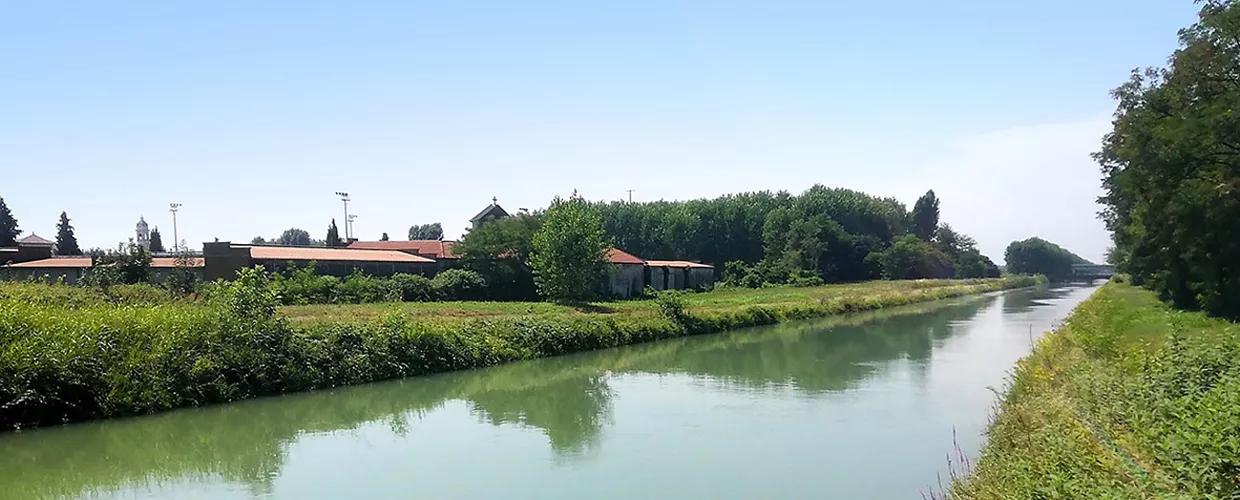
Overview
The Cavour Canal
Flagship of hydraulic engineering at the dawn of the Unification of Italy.
The Cavour Canal is an 83-km-long artificial canal. It starts in Chivasso, in the province of Turin, where you can visit (on request only) the imposing inlet for the waters of the river Po. The inlet, 40 metres wide at the bottom, is completely paved with cobblestones, concrete and stone slabs. Not far away, an imposing building houses the sluice gates used to regulate the flow of water. The canal ends at Galliate, in the province of Novara, where it flows into the Ticino river, a tributary of the Po.
In its entire length, the Cavour Canal has 210 siphons, 101 bridges and 62 canal bridges. Almost all of these structures are still original! A veritable network of pre-existing, purpose-built canals (including the last one, the 1954 Regina Elena Canal) extends into the surrounding area. This leads to a total water system of more than 1,500 km irrigating some 500,000 hectares of rice fields. Impressive, isn't it?
The building in Chivasso, where the canal originates from the river Po, is truly extraordinary and monumental. But the entire canal is an extraordinary work of hydraulic engineering, with 4 siphon tombs, allowing the canal to pass under the Elvo, Sesia, Agogna and Terdoppio rivers and streams; and 4 canal bridges, allowing the canal to pass over the Dora Baltea, Cervo, Rovasenda and Marchiazza rivers and streams!
The final design of the Cavour Canal was entrusted to engineer Carlo Noè in 1852. As the name itself suggests, it was Minister Count Camillo Benso di Cavour who wanted the canal to bring water to the rice fields of the mid-Vercellese, Novarese and Lomellina areas. Noah's project was approved by the Italian Parliament in 1862 and work was carried out in just three years, from 1863 to 1866 almost exclusively by shovel, with extraordinary works of underpassing and overpassing rivers. The Cavour Canal crosses 23 municipalities in the Piedmont region and is distributed throughout the rice-growing area (also in Lombardy) thanks to branches and minor systems.
Although the project is signed by engineer Carlo Noè, the original study was carried out by land surveyor Francesco Rossi from Vercelli. According to this study, the canal had to start on the river Po in the area around Crescentino in the Vercelli district, so as to take advantage of the natural slope of the land and the flow of the Dora Baltea into the Po and thus avoid dry periods. This location, however, would have divided the land owned by the Count of Cavour and was therefore abandoned. Noah's project starts from Chivasso, but needs to rely on the Ivrea Canal to bring water to the Vercelli rice fields from the Dora, during dry periods of the Po.
Credit to: Giulia Varetti
Canale Cavour, Italy